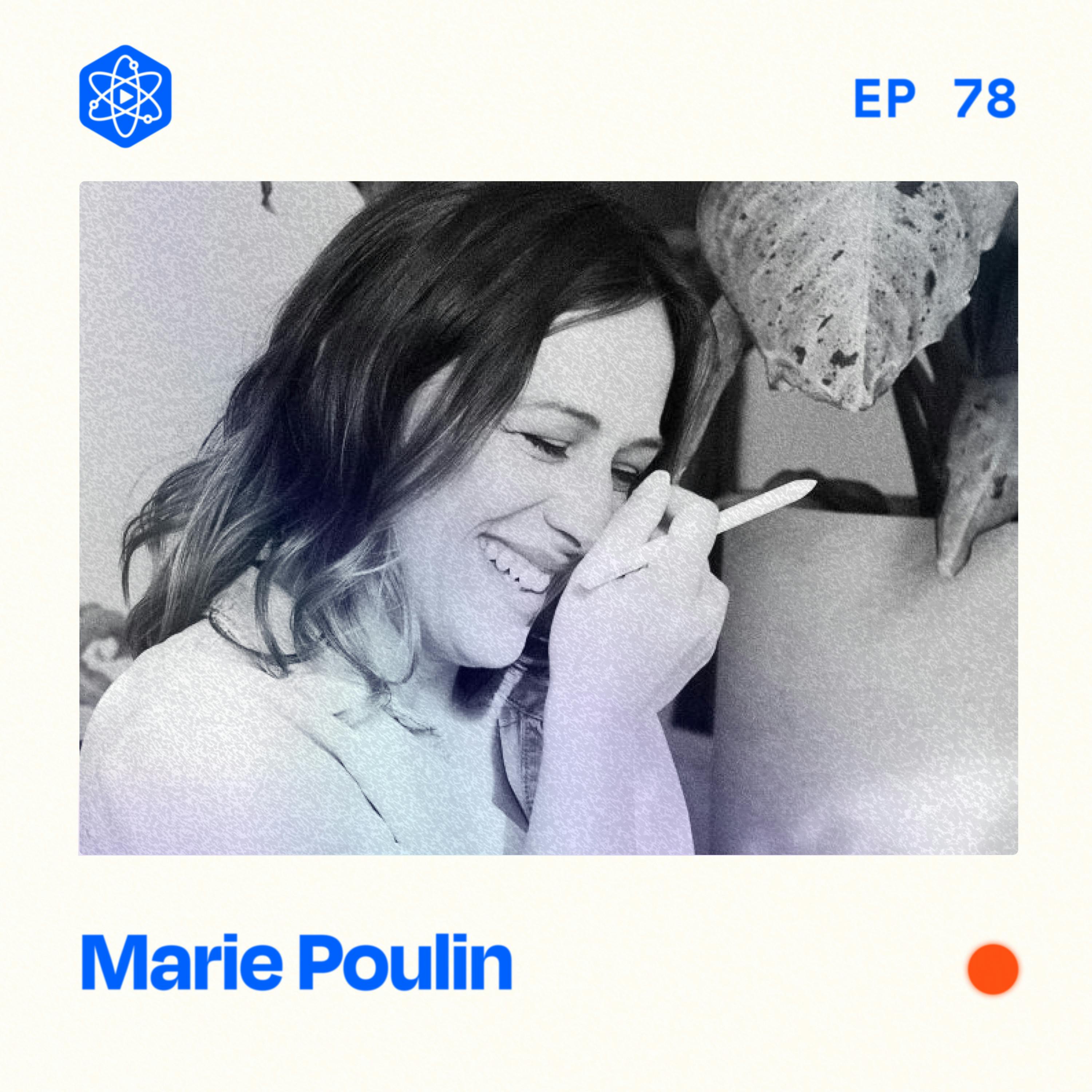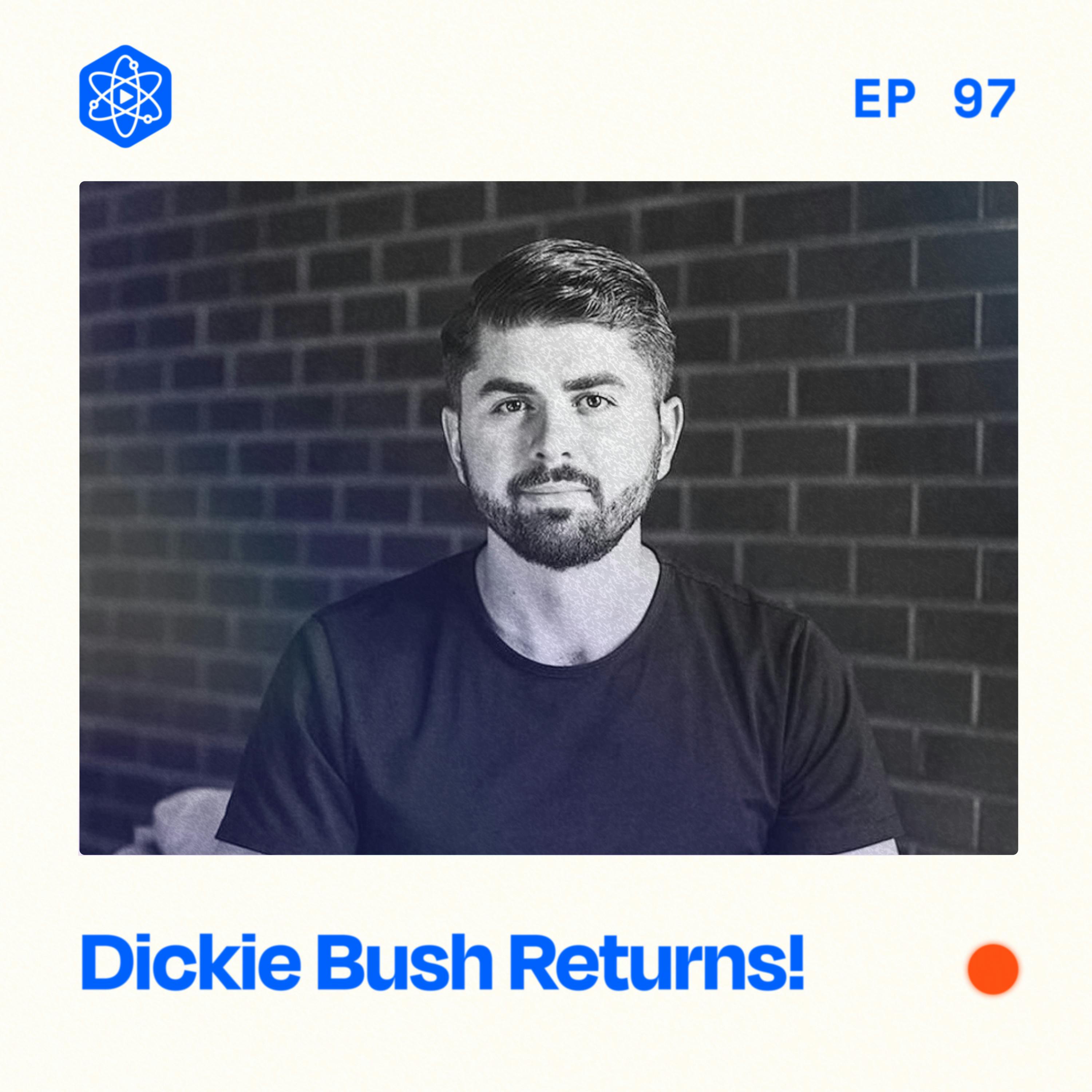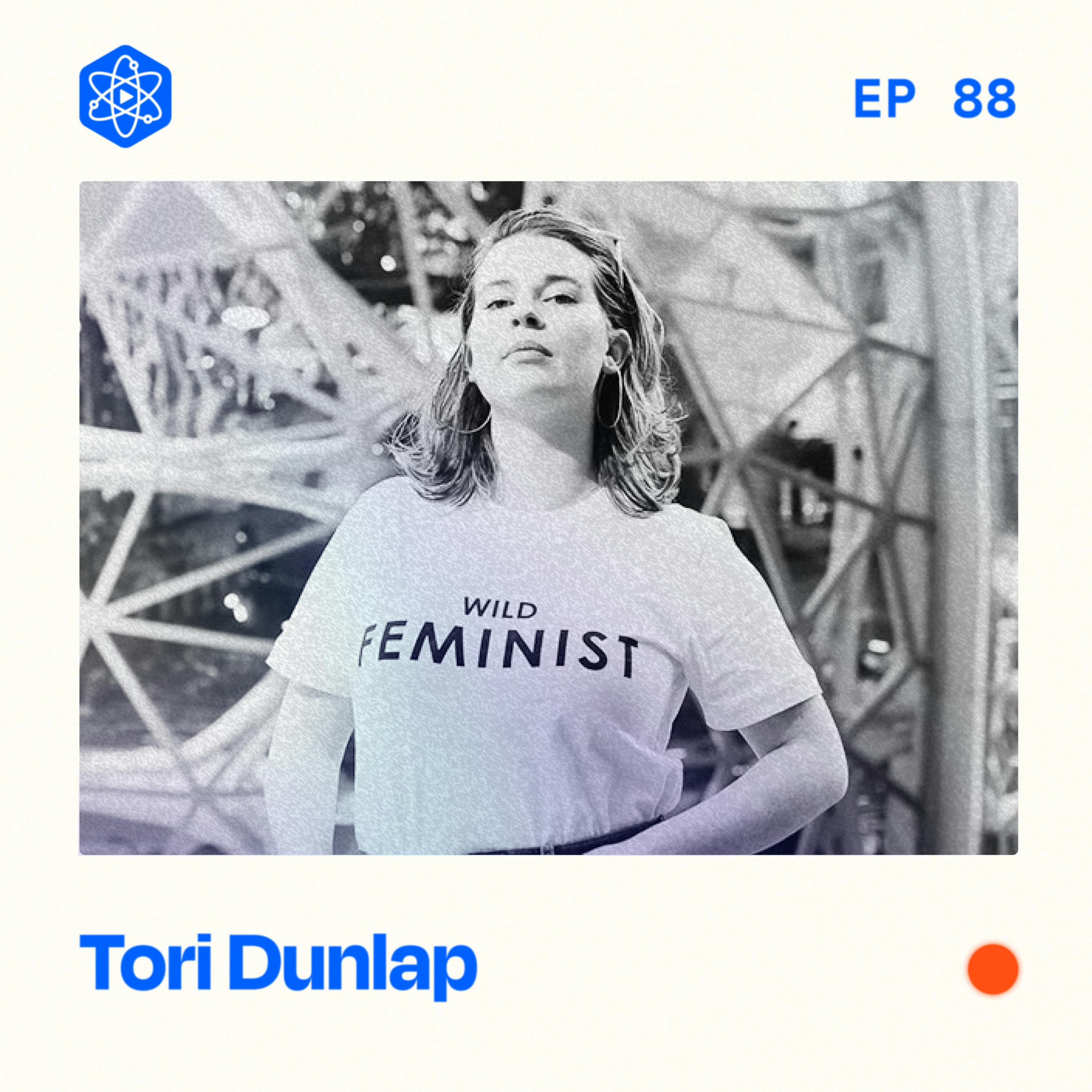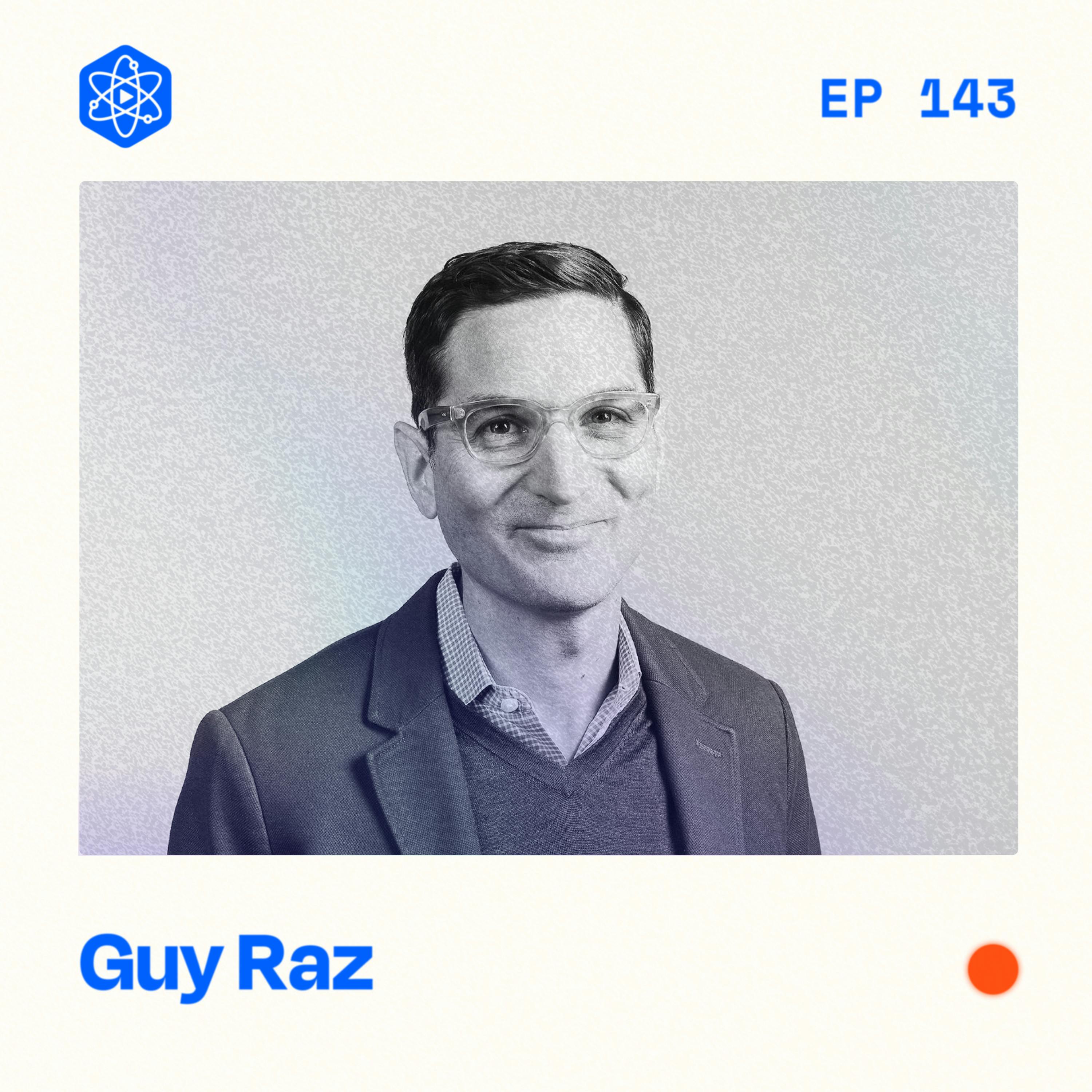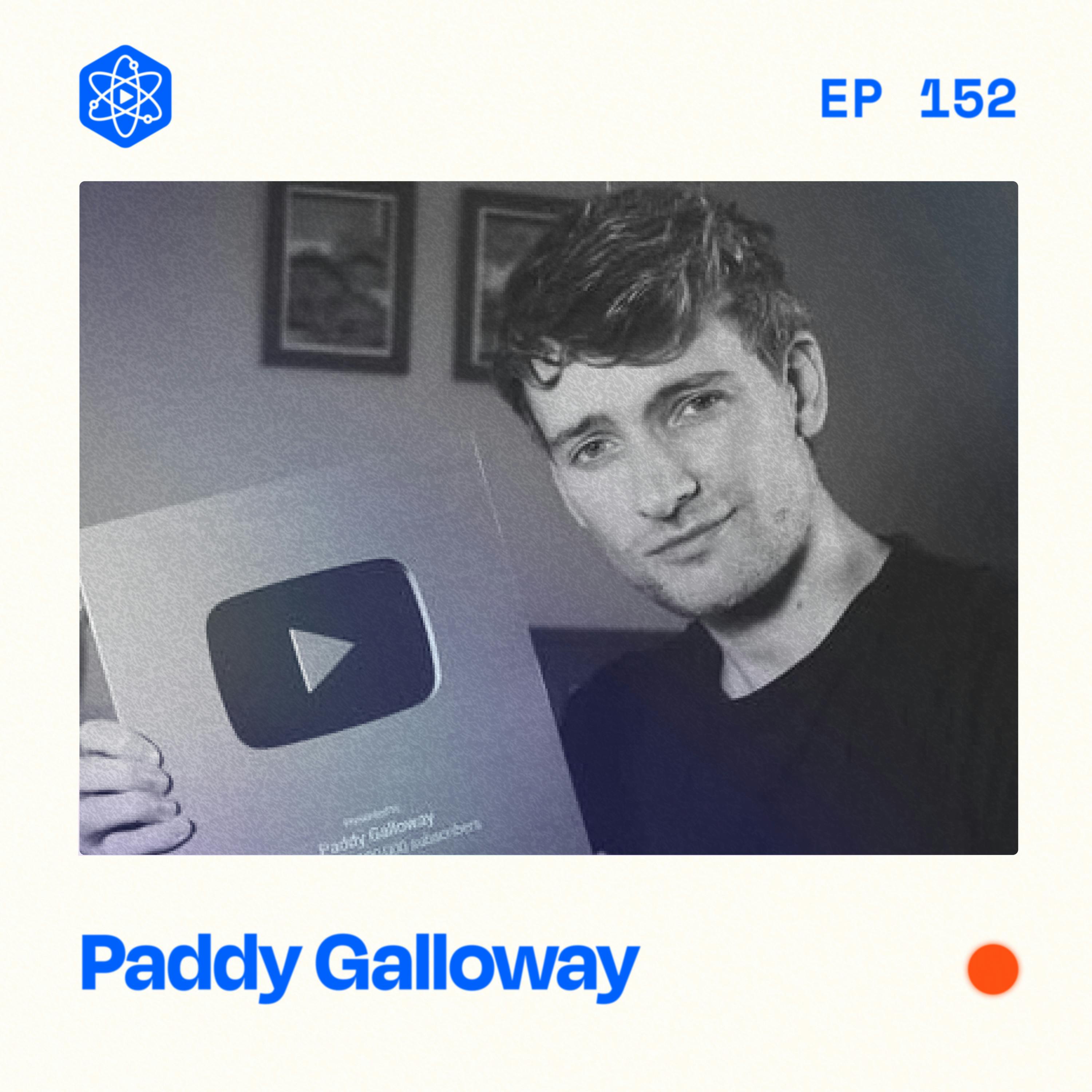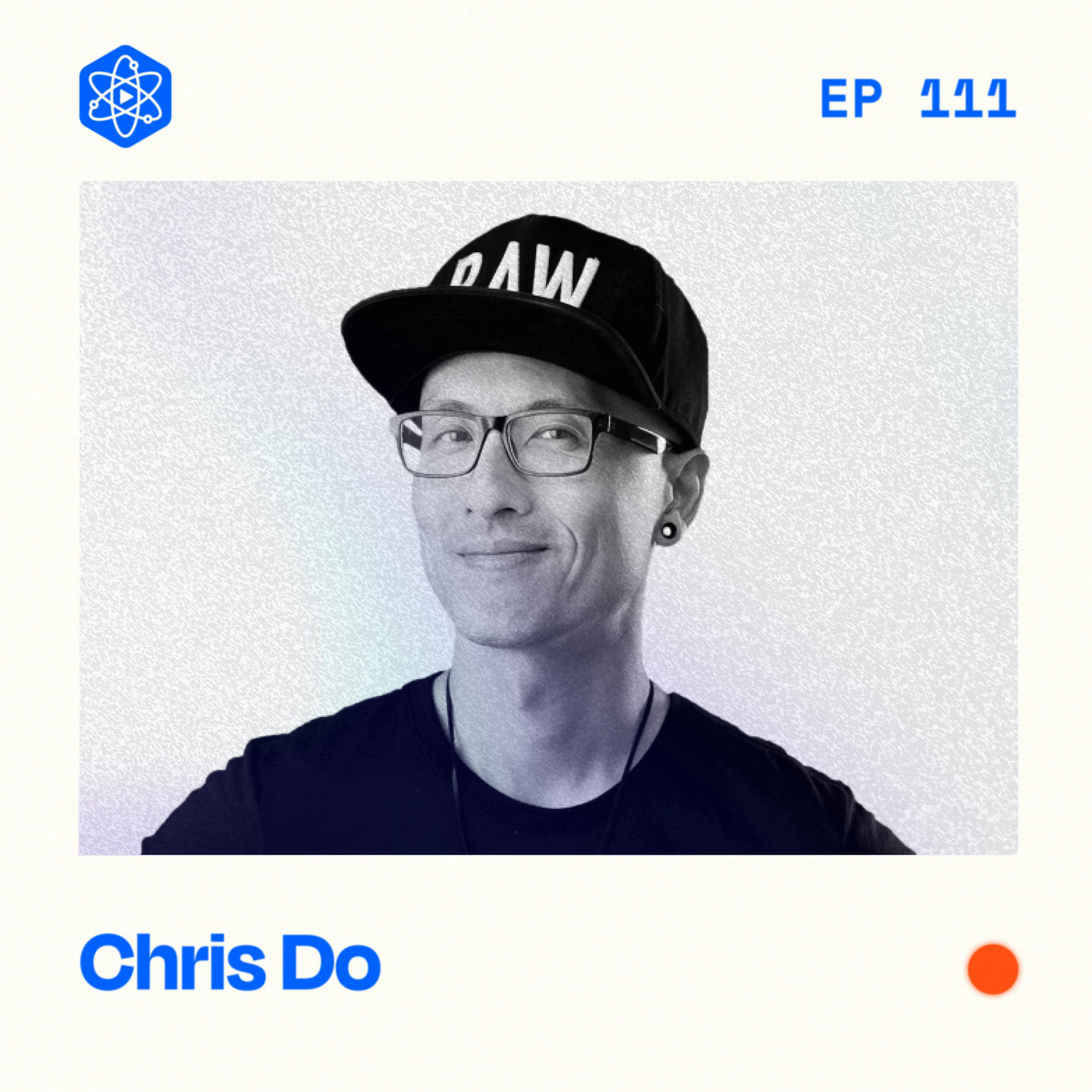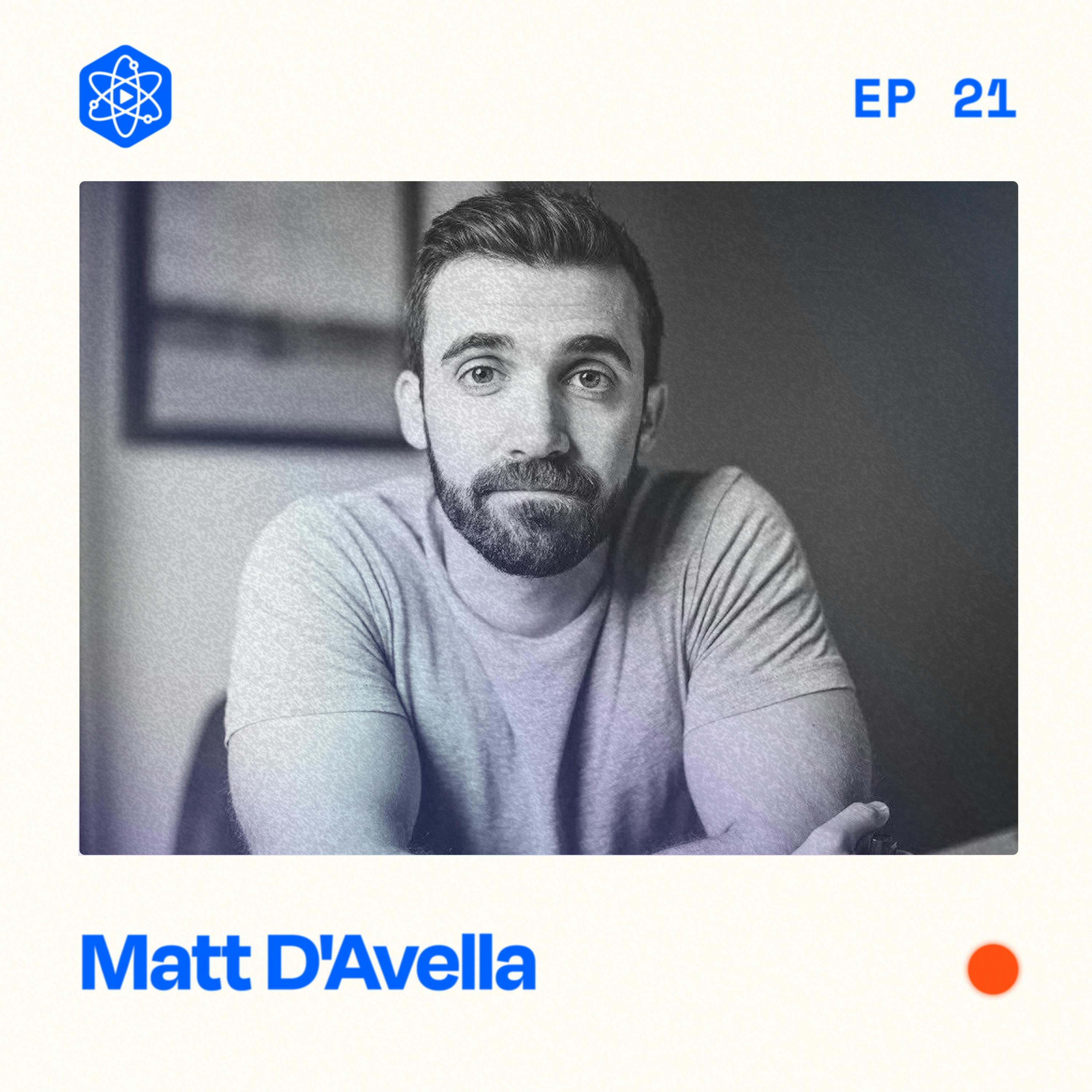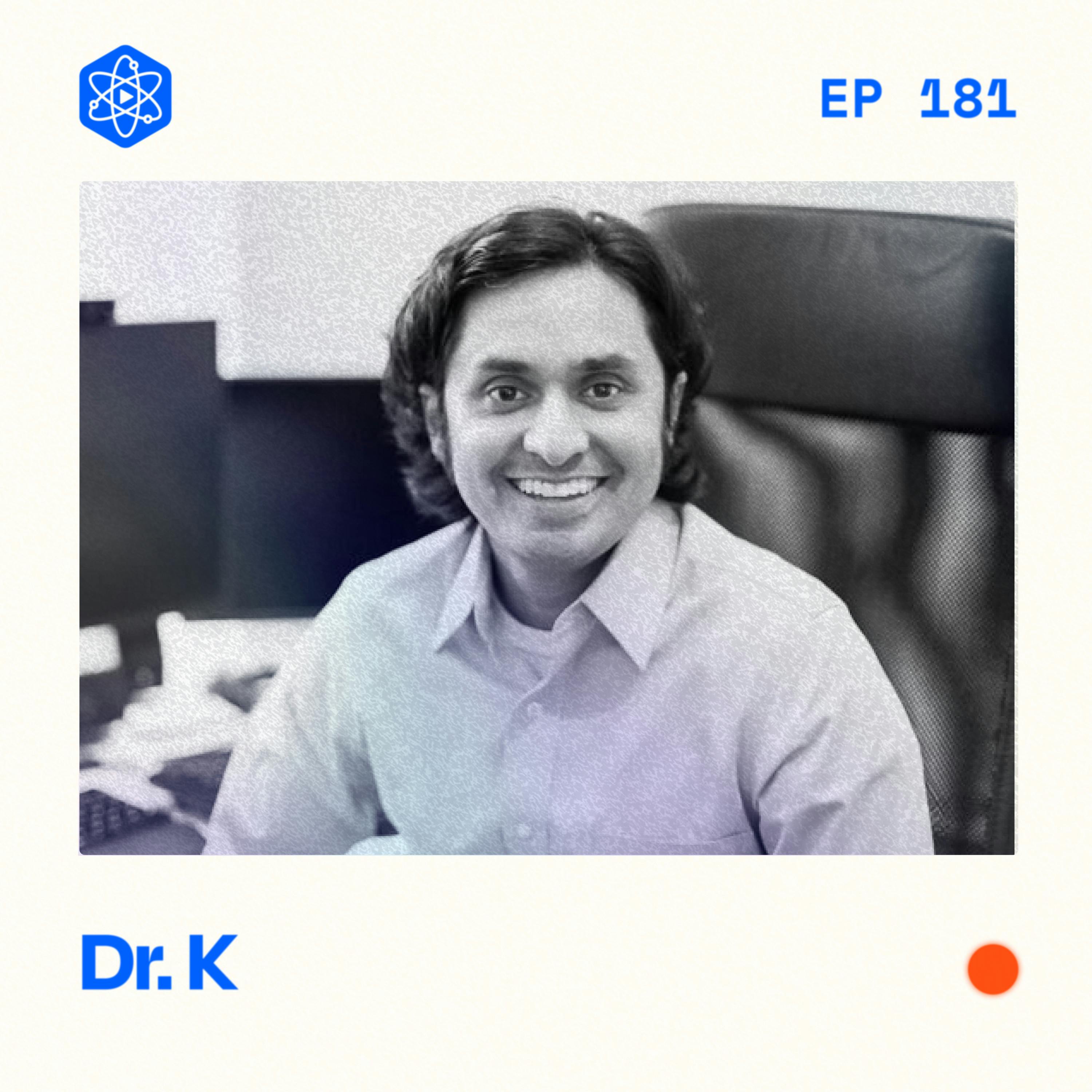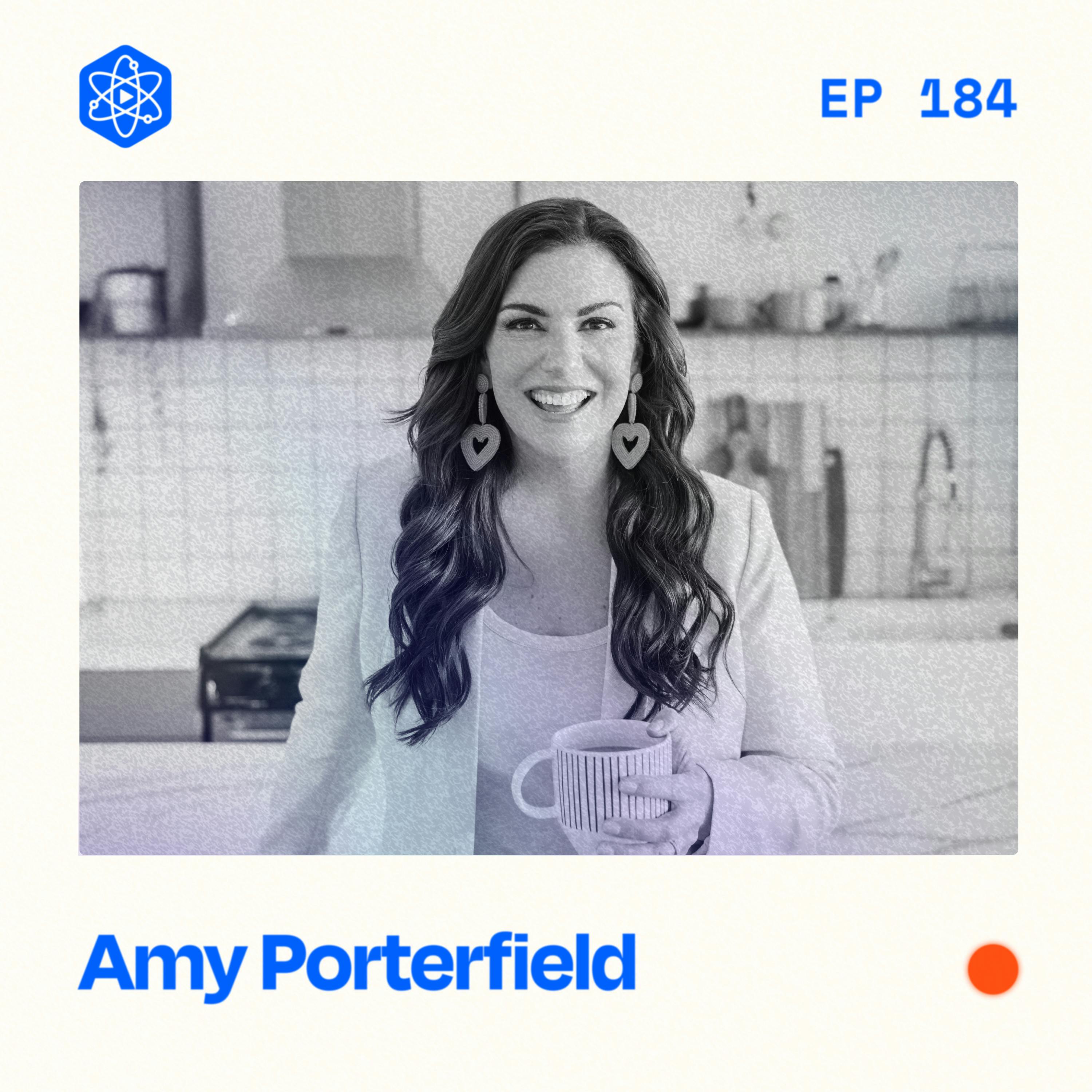Gina Bianchini is the founder and CEO of Mighty Networks. Mighty Networks helps creators bring their community, courses, memberships, and events together in one place under their brand.
Gina Bianchini is the founder and CEO of Mighty Networks. Mighty Networks helps creators bring their community, courses, memberships, and events together in one place under their brand.
Mighty Networks has more than 10,000 paying creators, brands, and coaches today. Users include established creators and brands such as YouTube star Adriene Mishler, Xprize and Singularity University founder Peter Diamandis, author Luvvie Ajayi Jones, comedian Amanda Seales, Girlboss founder Sophia Amoruso and brands such as the TED conference and wellness scheduling platform MINDBODY.
Before Mighty Networks, Gina was CEO of Ning, which she co-founded with Marc Andreessen. Under her leadership, Ning grew to 100 million people in 300,000 active social networks across subcultures, professional networks, entertainment, politics, and education.
In this episode, we talk about the opportunities for creators to build a membership business, what the most successful community builders are doing today, the major problems with Facebook Groups, and why Gina believes that great sustainable memberships can be built with fewer than 30 members.
Learn more about Mighty Networks
Follow Gina Bianchini on Twitter
Enroll in my Community Building Crash Course
Enroll in my Memberships & Advanced Community Building Workshop
Full transcript and show notes
***
RECOMMENDED NEXT EPISODE
→ #192: I coached Ali Abdaal on building a membership
***
WHEN YOU'RE READY
🚀 Get CreatorHQ (creator operating system)
🧪 Join The Lab (private membership community)
***
CONNECT
***
SPONSORS
💼 View all sponsors and offers
***
SAY THANKS
Gina Bianchini 0:00
Content alone will kill the creator economy. It is not a life. It's not a really great business. You have to feed the engine in a world where you have rented your audience through an algorithm that you have absolutely no control over.
Jay Clouse 0:19
Welcome to Creative Elements, a show where we talk to your favorite creators and learn what it takes to make a living from your art and creativity. I'm your host, Jay Clouse. Let's start the show.
Hello, welcome back to another episode of Creative Elements. I'm excited as always to have you here spending the next hour or so with me, and welcome to August. By the way, it's kind of crazy. But we are now into August, the summer is absolutely flying by. And before we get into it here today, I want to give a quick shout out to Marsh Buice, who has been sharing his takeaways from these episodes on Twitter lately, and who left a review on Apple podcasts. Marsh wrote, I swear when I'm listening, I'm on a gondola and Jays voice is my tour guide. His questions are spot on and the information Jay and his guests bring is relevant and can be immediately applied to your profession and life. Thank you Marsh for what is one of my favorite reviews of all time. I've never thought of myself as a gondola tour guide with my voice but I accept this. And thanks for sharing your thoughts on Twitter as well. If you haven't left a review on Apple podcasts yet, please consider doing so as it helps the show a lot. And it may get read here on the show. All right. Well, today is a fun combination of two of my favorite types of episodes. As you probably already know, I'm a big believer in community I lead community at Smart Passive income. I talk about it a lot here on the show, including interviews with Rosie Sherry, Natalie Franke, Courtland Allen and more. I also love to occasionally bring in a guest who is not only a creator themselves, but has some unique perspective on the opportunities for creators as a whole. When I talked to Sahil Lavingia of Gumroad, we talked a lot about what he was seeing as trends in the creator sphere because his product is used by 10s of 1000s of creators, nearly 100,000 creators have used Gumroad today is a little bit of both of these ideas because I'm talking with Gina Bianchini, the founder and CEO of Mighty Networks.
Gina Bianchini 2:29
We launched Mighty Networks in 2017 in the fall of 2017. Really the take with Mighty Networks was to serve creators, brands coaches with the ability to create an online business powered by community.
Jay Clouse 2:46
Mighty Networks is a software platform that lets creators combine their community courses, memberships and even events together in one place under their brand. those communities have their own custom website, as well as a dedicated space in the Mighty Networks mobile app.
Gina Bianchini 3:01
Our vision for the world is one where there are millions of unique, vibrant communities, mastering something interesting or important together, led by creators, by brands, by coaches, and fueled by digital subscriptions and digital payments.
Jay Clouse 3:22
I'm really drawn to this vision and investors have been too. Mighty Networks brought in $50 million in investment in April of this year, to help create what Gina calls the creator middle class, which she defines as creators who generate over $30,000 per year from Digital subscriptions and payments.
Gina Bianchini 3:40
The thing that really motivates me and my team is the opportunity for creators to build a business that they can be proud of that can have impact, not because they are a content factory, but rather because they are able to bring people together where the value of what they are building and creating has as much to do with the conversations and the stories, experiences and ideas of other members as it is about you as a creator alone.
Jay Clouse 4:13
Before Mighty Networks. Gina was the CEO of Ning a social network that she co founded with Marc Andreessen, who is now a highly respected venture capitalist. Under her leadership, Ning grew to 100 million people and 300,000 active social networks across subcultures, professional networks, entertainment, politics and education. So Gina knows a thing or two about community. And all that knowledge and experience has brought her to create mighty networks several years before the topic of online community was as hot as it is today. So in this episode, we talked about the opportunities for creators to build a membership business. What the most successful community builders are doing today, the major problems with the Facebook groups, and why Gina believes that great sustainable memberships can be built with fewer than 30 minutes I'd love to hear your thoughts on this episode. As you listen, you can find me on Twitter or Instagram @JayClouse tag me say, Hello, let me know that you're listening. And of this episode inspires you to check out Mighty Networks yourself. I did become an affiliate after Gina and I had this great conversation, and a link to learn more is in the shownotes. So now, let's talk with Gina.
Gina Bianchini 5:28
Let's define creator. So you've got you've got content creator, which is I make videos on YouTube, I make Tik Tok videos, I am building my Instagram following and the goal with that is to build a large enough audience that I can monetize my audience through either sponsorships through subscriptions or support on Patreon or something else. Or I can spin that audience off into a another content subscription on say, whether it's substack, or whether it is only fans or that that is the content creator world. But what I know to be true is that there are a much broader, more interesting set of people and businesses and followings that be that can be created when you are not limited by social media platforms or content alone. To just sort of generalize the definition of of how we think about that, and more broadly, is creators that are building communities that get more valuable to every member with each new person who joins creators that are thinking about how they are delivering knowledge. So you have the whole course creation world, which again, kind of is different than the social media creator world, but is also something that again, there's like in all of these cases, there is revenue generated by subscriptions and digital payments. That's that's really kind of I would say what people have in common when we talk about creators when we talk about what it means to create. So here's the thing, though, that I believe very passionately, when we start to think about these different kinds of creators, I think we're at a point where it's like the influencer has become a creator, the online course instructor has become a creator, the community builder has become a creator. But here's where I think the creator economy is just straight up wrong today, and will evolve over time. And I say this, from the vantage point of just taking the long view, content alone will kill the creator economy. Content alone will kill the creator economy. It is it is not a life, it's not a really great business, you have to feed the engine. In a world where you have rented your audience through an algorithm that you have absolutely no control over on platforms that if they have been known for one thing, it is in changing the rules. They've changed the rules for brands, they've changed the rules for groups, they've changed the rules for creators and will continue to do so. And I don't even think we need to name names here. Because I think it's pretty obvious.
Jay Clouse 8:29
How does that statement play into platforms where you already own the audience, whether it's a podcast, RSS feed, whether it's email, does that statement hold true there?
Gina Bianchini 8:40
Not as much I think, I think if you have your email list, and certainly again, podcast as long as you have the ability to reach people, and maybe this is in terms of defining terms, when you have the ability to reach people across any platform, that is your power as a creator. And it's actually one of the reasons why you know what we did when we were building Mighty Networks. And just, you know, even before we launched, we went down the list of things that we wanted to do to put the creator first and again, this is a broader definition of creator. So on a Mighty Network, you do not need to be a content creator, you can you can just simply put up your shingle in the same way that you can start a Shopify store. And you can bring people in and it is the connections that those people are making with each other in pursuit of a topic that they want to master together. That really makes what you are building on a mighty network different and special. Now Additionally, we have folks like Yoga With Adriene or Luvvie Ajayi Jones, we have very popular creators who use Mighty Networks. And the reason Mighty Networks stands out from kind of what else is out there. It's as much about the members meeting and building relationships with each other as it is about your content. So you do not have to be on this content treadmill. When you own your own community, it's as if you have your own website, you own your community. Also, we give you all of the data and information from your media network. So it's as if you are building an email list because you are building an email list. And, and that notion of going from renting to owning your community, your fan base, but also, I think this is the this is the piece that is going to become more and more obvious to more and more people. When you own your community. And the value of your community becomes as much the relationships being made between members, you are providing your members more value, with less work. And you also can do it with fewer people, you can do it with fewer people. So our data is really clear on this 30 people create a sustainable community on a Mighty Network.
Jay Clouse 11:07
Tell me more about sustainable, what makes it sustainable?
Gina Bianchini 11:11
That they are continuing to engage that they are able to grow over time. So you know, there's this, there's this notion of if you don't actually have more than 1000s of people, or 1000 true fans, that you cannot build a successful sustainable community, or a successful sustainable online business. And that's just simply not true. So you can have, you know, as few as 30 members, and those can be paying members or those can be free members, we see activity, we see engagement, continue, because not, you don't have to keep feeding the content engine. But the relationships that those 30 people are building with each other is the value that you as a creator are actually bringing to them.
Jay Clouse 12:00
I love this evolving definition of creator. I love how broad and flexible it can be, especially for people's identities, you know, for a long time identified as an entrepreneur. But that means if I take a part time job, a full time job by identities taken from me, whereas I can be a creator, no matter what I'm doing, because the act of being a creator is, in my opinion, making something novel and valuable to somebody else. And that could be just holding space for a community that could be a place for public discussion.
Gina Bianchini 12:31
I think that's true. But I here's the other thing that I would say is that's a narrow definition of being an entrepreneur. I mean, if anything, you know, being entrepreneurial, being creative is is what we do as human beings. And I would suggest the organizing and being a part of communities is how we, it's how we learn. It's how we grow. It's how we stretch. It's how we evolve. It's also how we how we innovate, you cannot point to whether it's a a writing scene, whether it's a music scene, that did not emerge from a tight knit community, of people that were not just supporting each other, but also pushing each other forward.
Jay Clouse 13:18
So I'm listening to this and I'm saying, Wow, 30 true fans seems way more attainable than 1000 true fans, that that article by Kevin Kelly, about 1000 true fans use the price point of each of them paying you $100 per year, right. So what is your equivalent if I'm going to have 30 fans?
Gina Bianchini 13:36
Yeah, so first of all, depending on what and how you're defining your life, and what's important to you, and where you're investing, you know, 30 people paying you $1,000 a year is pretty, pretty reasonable. And that's not crazy, especially when you start to just look at whether it's a monthly fee, or whether it's $1,000 course, I'll take it one step further, which is, if people are willing to pay for a course, and an ongoing subscription, or membership, which is one of the places where we really stand out, there's no reason why people aren't paying you $2,000 and here's the beauty of this model. If you can get 30 people to pay you $2,000 you can get 60 people to pay you $2,000 and if you can get 60 people to pay you $2,000 you can get 100 people to pay you $2,000 and the thing that I think is just so fascinating, and this is actually one of the biggest surprises that we've seen it again in our data is that free to a low price is very difficult to do. It's very difficult to pull off taking your free Facebook group and saying oh well, if I just charged three or $5 a month they'll pay me that actually does not work and It becomes really depressing for the person that wants to move their free Facebook group into something that's paid the much more effective way. And we see this over and over and over again, is you create a paid program, something that's more intensive, which is also going to be a lot more fun for you. Because you can bring a smaller group of people together who are super excited, super engaged, we've talked about this as your ideal member, the people who want and need your community or your courses, or your membership or your event the most right now, right now in all caps. And when you bring even 10, or 20 of those folks together, and charge a premium, over $500, for that either experience or annual subscription. First of all, it's super fun, people are invested, because again, people pay attention to what they pay for. And then this is the beautiful thing, it is just as hard or as easy to create that type of paid program for a smaller number of people as it is to try to make that zero to $5 a month work, same amount of work, it might not feel like it to people, but it is absolutely the same amount of work. One is also going to be a lot more energizing and successful. The other is going to be a lot of work and frustration. And again, we have the data at this point to back this up.
Jay Clouse 16:21
After a quick break Gina and I continue our conversation about membership pricing. And a little bit later we talk about how to encourage participation in your membership too. So stick around, and we'll be right back. Welcome back to my conversation with Gina Bianchini the founder of mighty networks. Before the break, Gina was telling us that her data shows is just as easy to create a premium price membership for fewer people than it is to create a low price membership for a lot of people. And she had more to say about making that choice to create a premium membership.
Gina Bianchini 16:52
Now, here's where it just gets so fun. Where you can deliver results and transformation. For 10 people at $500 or $1,000. Now you actually have the ability to scale that much more effectively and much more successfully than you could that $5 that would have required you to get not even 1000 true fans, but like 5000 people to get even to the same level of revenue. So for for the majority of us just think about what happens if we take less time trying to build content videos and PDFs, or like a lot of video. Because this is the other thing is when you're interacting with other people, the time just flies, versus trying to like sit there and talk at your screen where you're not actually having that give and take, which again is just what we do as people. So one's easier. one's more lucrative. One requires a lot fewer people to be successful. And I think we are going to see more and more and more people say wait a second. Why would I go and build a content factory on rented traffic that requires me to I mean, literally, it's like that requires me to post 5, 6, 10 times a day. And I never am going to get any scale. Because people I talk to people, they talk back at me, but nobody's talking to each other. And as long as that's true, I am going to be exhausted. There is a reason why Mark Zuckerberg does not have his own Insta stories where he is actually direct messaging his followers and fans, what did he do instead, he built a network effect, he built a community that gets more valuable to every member with each new person who joins and contributes. And I believe and what we are building and Mighty Networks is the ability for every single creator brand and coach to have that business, not a content business that is just simply making big tech more successful. For you know, pennies on the dollar for the Creator.
Jay Clouse 19:06
I love to hear that you have some data behind this because anecdotally what I've noticed in my own behavior, and the behavior of digital products that I tried to sell, is harder to sell something that is sub $10. Just full stop whether it's a membership or a product than it is to sell something for $20. And it just doesn't make a whole lot of intuitive sense to me. But when I see something less than $10, I think it must not be very good. And it's not worth going upstairs to find my wallet to pay for it.
Gina Bianchini 19:31
So this is something we even learned with our own pricing at Mighty Networks. And it is it is very, very difficult for for folks to get their heads around. But the data is really clear on this. That price of a cup of coffee business model does not work for the vast majority of people, for the vast majority of creators just doesn't work because free is one thing and the only way to really create something that is differentiated from free is something that costs, whether it's 20 bucks a month, whether it is $500 for a course or program, whether it's $1,000 for lifetime membership, or $2,000, for a lifetime membership, those are the paid programs that are working on the interwebs and beyond today, and it's because we can't in a digital world, price equals quality in a way that is very difficult to see. Otherwise, one and to people pay attention to what they pay for. So they're actually going to get better results, you're going to have better testimonials, better testimonials lead to more people, believing the promise of your program or your community or your course, which also then gives you more revenue and resources to get out and create awareness amongst more people to bring more people in to get better results. It's a virtuous cycle that really, really works effectively. So you're not just seeing it in your own behavior.
Jay Clouse 21:08
Let's go to the other end of that spectrum. You just mentioned, lifetime memberships. And this is something that I haven't decided how I feel about because it seems attractive and the value proposition seems clear to the buyer. Oh, if I pay this now, I never have to pay again and have access forever. But the community builder I mean, wanders into your to let's even say you get through year one. Are you still engaged in year two, after you've stopped paying for something actively?
Gina Bianchini 21:31
Yeah, not really. And this is actually one of the reasons why we have seven, eight figure course creators coming to Mighty Networks where they you know, they built incredible businesses on other platforms with that lifetime membership model. And what they want going forward is actually that annual membership model alongside their courses. So if anything, and by the way, that was something that we have co created with our hosts, or what we call the creators that use Mighty Networks. And it's been a really interesting aspect to what I think is emerging and evolving in this world of the creator economy and how folks are building online businesses powered by community going forward. They want that combination of online courses and paid memberships together in one place under their brand and instantly available on every platform.
Jay Clouse 22:31
I have ambivalent feelings around memberships, because it feels like SAS, the business model is clear, it feels awesome. At SPI we have a paid community that is monthly and annual. And I think to myself all the time, should we just go full annual, and remove 11 decision points throughout the year and try to show people Hey, you got your values worth this year as opposed to this month? I'd love to hear your thoughts on monthly versus annual plans or quarterly, what are you seeing in terms of subscription pacing?
Gina Bianchini 23:03
Yes, it's a great question. I am personally a believer in annual memberships, I think it's just easier for people to get their head around by data. And our data doesn't necessarily support my personal opinion on that. So we see people being very effective with annual subscriptions, we also see people being very effective with monthly ones. So there is not clear data in the same way that we see the zero to $5 not really working. And that zero to 1999 a month works much better, because you're going to get fewer people but the people that are are buying that are much happier and much more engaged, and therefore you're creating a much more valuable community. That being said, there are communities there are memberships across Mighty Networks that just have an annual fee. And it's a high annual fee, and it works beautifully. So I wish I had more concrete one way or another but the data is all over the place. In that case,
Jay Clouse 24:08
I'll just keep questioning it endlessly and never make a change. Your point of 30 members paying somewhere around $1,000 per year is really near and dear to me. Because in 2017 when I started my first independent business, it was facilitating mastermind groups. I worked with 30 to 50 people a year and they were paying between $500 to $1500 like literally the same model. Same math we're talking about right here. And I didn't have necessarily an online audience. But the cynical part of me or the cynical part of the advocate for the listener and me is don't I still need to build something up to get already people to pay me $500 to $1,000 a year.
Gina Bianchini 24:48
No, no. And I thought a lot about this and again looked at the data. And here's why. It is not about a person's expertise. You know, we teach a framework called community design, which you know, the promise of it is that you can create a community so valuable you can charge for it, and so well designed essentially runs itself. And we've had over 5000 graduates of this program. And when when I look across those 5000 people, almost to a person, they show up, and they're like, this is the number of years of experience I have in this, or here's my 85 certifications. And here's what I know to be true. is not about your expertise, it is about your story. Where did you start? Where are you today? And where do you want to go. And in that context, you only have to be one half step ahead of your members, the value of what you are creating is not about your personal brand, it is not about your content, it is the value that comes from the fact that we live in a time in place where more and more people are socially awkward, that, you know, the more time we spend consuming our feed, the less ability and the less comfort we have with meeting new people. And so the the reason you only have to be a half step ahead, is because the value of what they're paying for in $500 or $1500, a year to join a mastermind group, or to join a community around the things that are most important to them. And so we see it in career, we see it in health, wellness, other important interests, from parenting to personal finance, is because you are creating the psychological safety, the comfort with I just have to show up, I'm going to meet cool people, I'm going to be able to achieve the results and transformation that I want to achieve and Jay is going to make it safe for me to meet new people so that it's not all on me. And I think that we continually under value and underestimate the value of that. Versus oh, people just want to consume more videos that I make, or like I need more PDFs. There was one Mighty Network that showed up at some point last year. And they were going to they were so proud of the fact that they had 40 hours a week of programming. And I was like who has like, who has time for that? That's not what people want? And so I think, you know, and it's certainly one of the things that you know, I spend quite a bit of time thinking about how do we how do we make this clearer to more people that in a moment and a time where we're just all kind of looking for how do I achieve the results and transformation? How do I look around, you know, a virtual call or a real world meetup and just have the safety and have the excitement that comes from somebody who's like, Gina, I'm so glad you're here. I have curated the set of people because I really want you to meet Jay because I think you guys are gonna have a lot in common. Like I just went to something yesterday, there's a fantastic Mighty Network called The What and The What Alliance and two women Gina Pell and Amy Parker have they have been curating just cool women, kind of a different age ranges, but like are all kind of doing something interesting in the world. Built it as a Mighty Network, it is one of those annual memberships over, you know, over $1,000 so so everybody who's there, you know, it's like, Okay, this is going to be fun, like I'm excited about, they organized a lunch in my neighborhood, actually. And we all showed up, we had not seen and some of us had never met in person. But because of the fact that we've been in this community together for a year, it felt super relaxed. It was like it was not like, Oh, so what do you do? Oh, great, do you have kids? You know, or, you know, what was your second shot? You know, what, what did you have? You know, it wasn't small talk that I would argue most of us are kind of over at this point. It's like, let's get into it. Let's get into it. And so I would say that that's all a very long winded way with an example, though, of the value is not about your expertise. The value is about your willingness to share your story, raise your hand and say, I'm going to take care of all the logistics. All you have to do is show up with the same goal. And I'm going to introduce you to people who are on the same journey with the same desire for the same results and transformation in their lives. And we're going to go on this path together.
Jay Clouse 29:49
When we come back, Gina and I talk about the major issues with Facebook groups, and how to create a community off of Facebook that people want to go out of their way to come back too. So stick around. And we'll be right back. Hey, welcome back. When you spend as much time in the world of community as I do, or the community community, as I like to call it, you often hear the argument to build on the platform where your members already are, which makes some sense. But that logic often leads people to create a Facebook group, because well, just about everyone is on Facebook. So I asked Gina, what she thinks about this advice, and how she feels about Facebook groups.
Gina Bianchini 30:27
So I love this question. I get it quite a bit. And here, let me answer it with a story and then extend it out. So the story is Yoga with Adriene, fantastic YouTube channel sells a, you know, a video app subscription. They had a Facebook group, and they had roughly 25,000 people in this Facebook group. And again, this Facebook group is for yoga, and yoga practitioners. And what they were finding was that on Facebook, people were in their own words coming in hot, coming in, angry, coming in outraged, coming in, in ways that just didn't make a lot of sense. And when you step back and think about it, it actually does make sense, because the vast majority of people on Facebook are interacting with your group, in their activity feed or in their newsfeed in between content that is about outrage, or family photos or friends, you know, partying, or having kids graduate. And so you never can give it attention. Your emotions are heightened. Your sense of outrage, the culture on Facebook is outrage. It is outrage, and we cannot help but have culture influence and impact what it is we do. So they tested their way into again, they use Mighty Networks, but this is just getting people off a Facebook group into their own space. And what they found was that the same question got a completely different set of responses. When they had their own look and feel. They had their own dedicated activity feed. It could be its own place, because it was its own destination. Fast forward. Today, yoga with Adriene's community on Mighty Networks, called Find What Feels Good Kula has over 200,000 members. So this this, this fallacy that you cannot grow something to be big one, you don't have to, again, the data that cross Mighty Networks, we see 30 people really creates a sustainable community. But you know, again, the reason I love this example is most people assume Okay, well, I have to sacrifice scale. If I have my own destination, that is simply not true. It is a sucker's choice to say I can either have scale and engagement, or I can have my own destination. And instead, you can actually have both. And it's only going to get more effective from here in terms of delivering that. And so, you know, do I believe that a Facebook group can still be great in terms of top of the funnel acquisition? Sure. But I think I think the only people that ultimately win when you choose to create a Facebook group is Facebook, because they are showing competitive groups to your group. They believe fundamentally that those are their users, not your members, they are not there to help you build a strong Facebook group. They are there to keep people on Facebook, generate enough data for them to run ads. And ultimately, they want the group admins to be paying for ads.
Jay Clouse 33:47
Just hearing that makes me feel gross and like want to shower. You know, but it's true. That's that's the way incentive structures work. Now, let's take the example of a member who says I won't get off Facebook, I want to join this community on Mighty Networks or any other platform, and they have all the best intentions. But as a new habit for them, it's a new place for them to go. What are you seeing your creators do to help create this as a destination that people seek out?
Gina Bianchini 34:13
I mentioned a few moments ago community design, basically, you know, the the benefit I have of of being really picking my lane around. What does it take to create a successful online community. I now built not one but two successful community platforms at scale and have watched in a front row seat, literally hundreds of 1000s of successful communities and many more that have failed, what matters. It really comes down to two things. One, a compelling big purpose. There has to be a strong motivation for your community and the more specific you are the better. So you know the big purpose sentence it has a beginning a middle And an end. And it's really clear what it needs to be I or we bring together who you bring together your ideal member, the people that need your community the most right now, right now in all caps. Two what you're going to do together, and it has, you have to push beyond, learn, share, grow, that's like, the most generic words ever. So that we can, what are the results and transformation that you are promising members, and that they are going to be able to get by being a member of your community, being a member of your course of your subscription, your your, you know, attend your events. And when you have that, everything gets easier. Now, what's the second piece. The second piece is we'd like to say, but you know, I have three pieces of a monthly themes, a weekly calendar, and then daily actions, daily polls and questions, ways for your members to connect with each other. But of those three things, the one you really need is a weekly calendar, you need consistency. So every Tuesday morning, we do this, every Thursday afternoon, we do this, and every Saturday at noon, we do this, and even if your members are not coming back to your community to contribute, they're still getting the notification at the same time every week. And that simple act alone, that simple ability to have consistency that supports that big purpose. Those are the two things that you need. Now, where do people make mistakes? One is that they assume that they can just bring a bunch of people together, and they'll figure it out. And that if they can't figure it out, then people are too busy. And they just want to be on Facebook, none of those things are true. It's like showing up at a party. It actually it's worse, it's showing up at a workshop. And the host of the workshop being like, Oh, you guys will figure it out. Like just you talk amongst yourself. What happens when you do that people are like, Oh, so what do you do? So do you have kids? You know, it's you need to actually provide a little bit of structure for people in the context of this big purpose. And the second thing is that, you know, there's even in the early days of social, we had to teach people, what are the expected behaviors, and the expected behaviors in a community are different than consuming being a member of an audience. And so the other thing is to not take all your social media that the other myth, don't take all the things you think you have, you know how to do because of social media and bring them into a community, like, I just have to post a bunch of content, or my favorite is, Oh, my gosh, I haven't posted anything in my community. No one's talking. So first of all, everybody's busy and they just want to be on Facebook, I should just go back to Facebook. The second thing is, oh, well, I'll just post an external link. And I'll ask the question, Hey, guys, what do you think? And then it's, it's silence. And here's, here's what happened. And then what happens is, you know, the creator spirals into Well, I guess nobody wants a community, I guess everybody's too busy. I'll go back to Facebook. What happened in practice was that you set up too high of a bar for your members to actually contribute. Like, you're one of 17 articles that got shared with that person, first thing in the morning. Nobody has time to read 17 articles and worse, and this is the bigger crime. What do you mean? Like, am I supposed to write like, one line? Like I liked it? Am I supposed to write like 47 sentences and paragraphs and have like a whole like thing? And then I also have to like, think about how does that? Like, how does, how do I present myself in that context? Like, it's too much work for the member, you are so much better off being like, Hey, we have Tuesday events show up. It'll be fun. On Thursdays we have a poll, answer the poll. Turns out if you answer a poll, you're much more likely to contribute to the rest of the community, you keep things lighter, you keep things in the community. So people don't have to like leave, because every time they read an article, they're like, oh, I'll just go over to these four places. So there's, there's so hopefully, you know, in these details, you can see that the things that people assume mean, they should just go back to Facebook, or that Facebook groups or the answer are actually just because there's like two big things. And like a couple of small things, you just have to tweak and then you can create a successful community you can charge for, and that will essentially run itself.
Jay Clouse 39:33
Oh, my last question here, Gina is actually just I want to get your take on this quote that I read in one I think is a New York Times article from Rebecca Jennings evox because I read this and it like hurt me and I would love to hear just your reaction. Okay. She said the influencer industry is simply the logical endpoint of American individualism which leaves all of us jostling for identity and attention but never getting enough. I think about you know, the long term of the creator economy. And I could see that take applying to the creator economy at whole. But I'd love to hear what you think is the long term, as you're talking about earlier, the long term play off of people beginning to engage in this way where they say I can build my own sustainable living with 32 fans.
Gina Bianchini 40:18
So I disagree with her. Here's why. To date, we have built software to monetize attention and advertising via advertising, which means just take Facebook or YouTube, we're going to do every those platforms are going to do everything they can to just keep your attention, they're going to outrage you, they are going to ask you, they're going to create incentives for you to just keep producing content. Now, that's like, people eating junk food, they'll do it because it tastes good in the moment, but it doesn't really feel that great over time. And we see this in terms of like, there is an absolute correlation between the amount of time we are spending in social media around being an audience and consuming other people or feeling like we have to perform for an audience. Well guess what people are not designed to either perform in front of an audience or be in the audience. 24/7, that is not how we're built. And so at the same time that we're seeing this, we also are treating mental health and anxiety and depression as if they're just new things that, you know, magically appeared. And we're not making the connection between the two. Here's what I also know to be true. We are designed to live and realize our full potential in community, making connections that get more valuable to every member with each new person who joins and contributes, that is a different model. And the software for that model has been stunted, has not gotten the level of investment that it will get from here. It has not gotten the full, beautiful, vibrant potential that it has to give people the platform that the environment to realize their full potential to learn new things to master to have impact to feel to feel good. And so do not accept that the way social media is built today is the end. I believe that it is only the beginning.
Jay Clouse 42:37
Talk about conviction, Gina clearly believes very strongly in the potential for creators to become great hosts and community builders. So much so that she's dedicated a lot of her career to making that possible. I was actually surprised by how firmly she believed that creators don't need much of an audience to build a community of 30 or so members, each paying $1000 to $2,000 per year. I'm still a little skeptical based on my own experience. But then again, that's exactly how I started Unreal Collective. In any case, I'm obviously a huge advocate of creating community within your audience, and there's a very good chance that I'll be launching my own membership later this year. If you're interested in learning more about that, shoot me a note on Twitter or Instagram. I also have two workshops on community building that you can check out in the show notes. If you will learn more about Gina. You can follow her on Twitter @Ginab. If you want to learn more about Mighty Networks. I'm an affiliate and would love for you to support the show by visiting their website using the link in the shownotes. Thanks to Gina for being on the show. Thank you to Emily Clouse for making the artwork for this episode. Thanks Nathan Todhunter for mixing the show and Brian Skeel for creating our music. Did you know that every week I send an email with each episode to tell the story of how I booked the guest. People really like it and you can get that email by subscribing to my newsletter at Jayclouse.com/emails. The link is in the show notes. If you liked this episode, you can tweet @JayClouse and let me know if you really want to say thank you, please leave a review on Apple podcasts. Thanks for listening, and I'll talk to you next week.








